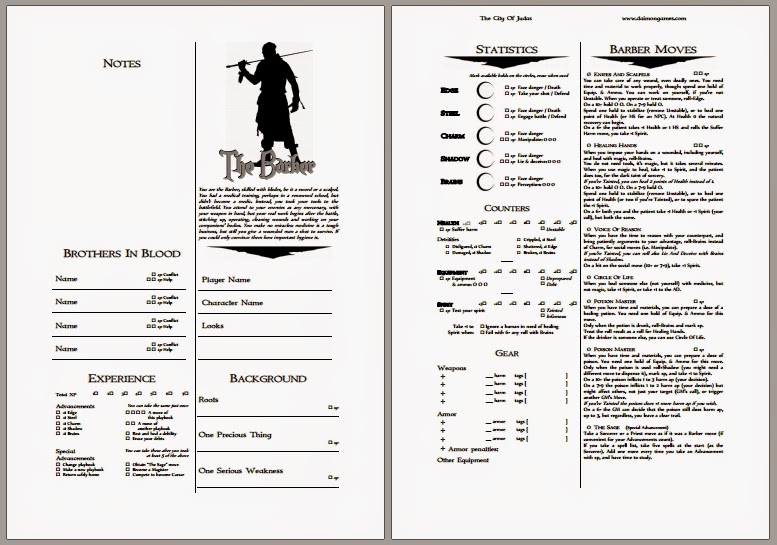I had the chance to review some comments about the Advantage Die used in #cityofjudas and I wanted to share some thoughts about this specific mechanic. Somehow, this is also connected with the Spirit counter mechanics.
In a few words: the Advantage Die is incremented during the game by some successful moves (usually on a 10+, sometimes on a 7-9), and the same happens to Spirit (increased by certain moves on 10+ or 7-9). Both are “good” for the characters when they have high values: the Advantage Die can be used to replace any die that rolled low, and Spirit can become problematic especially if getting to a negative score.
Both of them are somehow a measure of how well things are going for the given character.
Now, in terms of design, an epic RPG telling the story of a group of heroes, would reverse this mechanic.
If we’re aiming for powerful characters — with solid chances of defeating any type of opponent and with some sort of “balancing” power against unfavorable twists in the story — then I’d say give +1 to the Advantage Die on a 6-, and give +1 to Spirit when the character suffers some setback (bad outcomes) in certain moves.
This would basically create a mechanical counterbalance for failure.
The reward for success (let’s say 10+) would be the fictional result of the success itself, while the consolation prize for a 6- would be a +1 to the Advantage Die – that would allow the player perhaps later on to break out from a series of bad rolls by using indeed a high Advantage Die.
This is all nice and cool.
Actually, if anyone wants to give it a try, please do! and let us know how it went.
But City of Judas is something different. It aims to create a different fiction.
It gives certain rewards (i.e. the +1 to the Advantage Die or to Spirit) as additional prize for certain successes, inline with the spirit of each playbook. It does so to make certain actions, certain successes, to bear even more weight in fiction — so that we see the ripple-effect of these positive consequences even later on.
When players roll a 6-, on the other hand, City of Judas can be quite harsh. In combat, and in general when it comes to harm, City of Judas can be deadly. Should be deadly.
A single 6- won’t kill a character, but a few of them, against a powerful opponent, would do it. This is by design.
I think you can see now why — since I wanted to depict a harsh and dark-fantasy world — there is no “consolation prize” for failure. The prize of failure has to paid by the character, and the rules offer no compensation for it.

